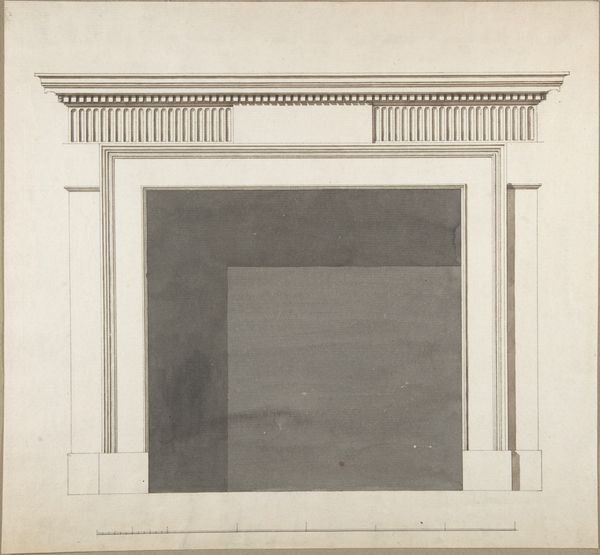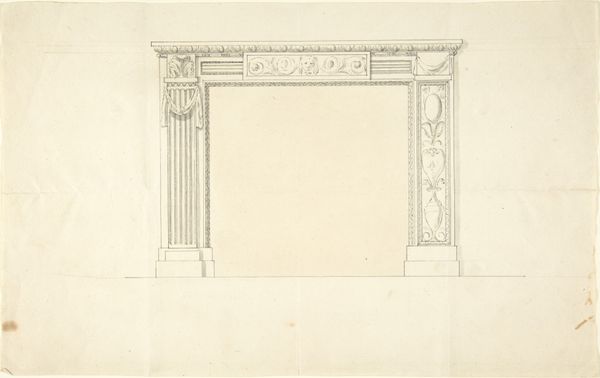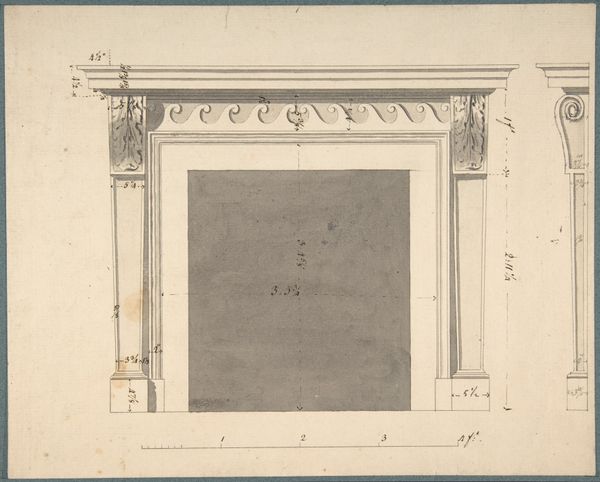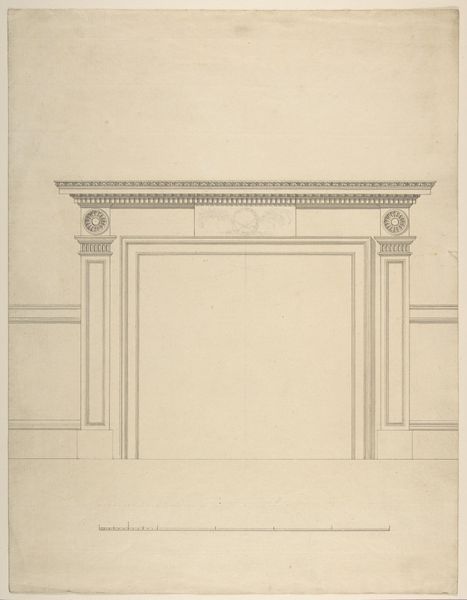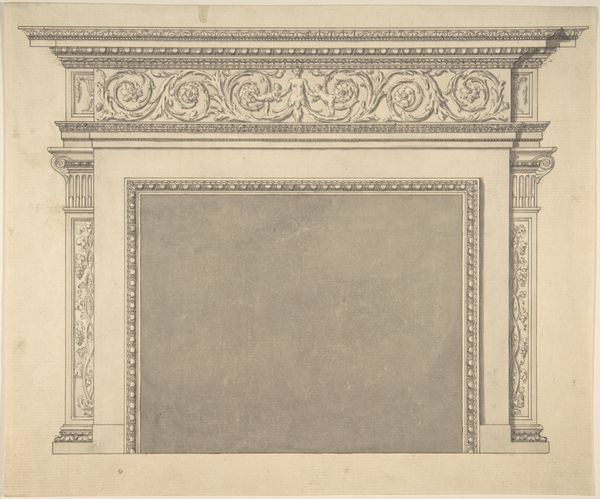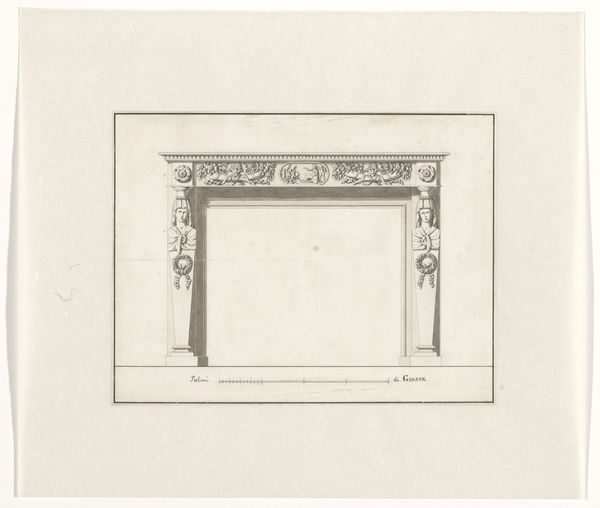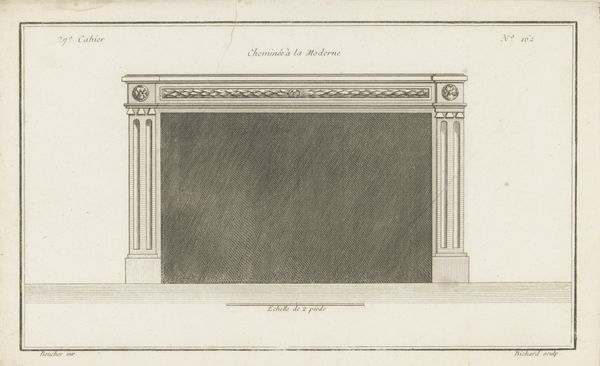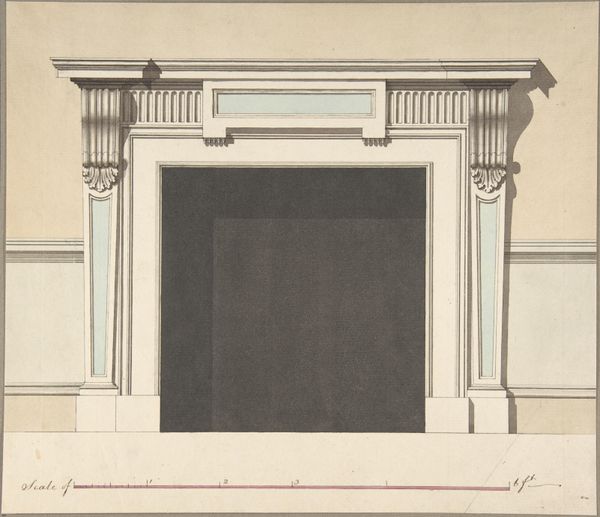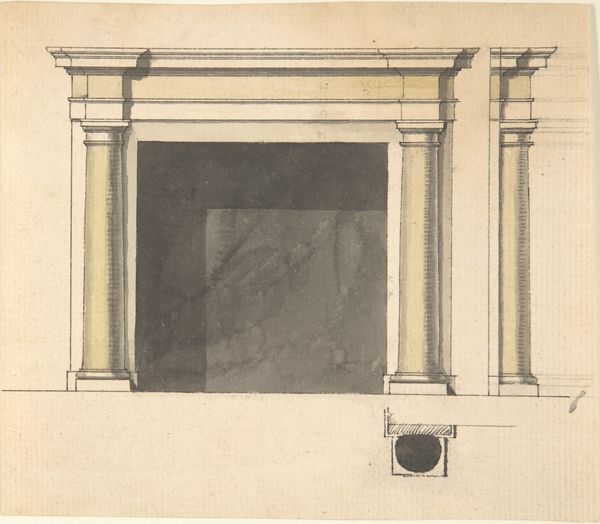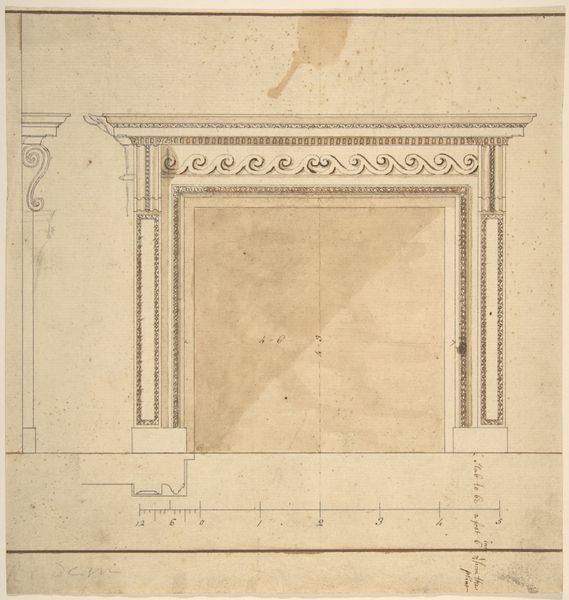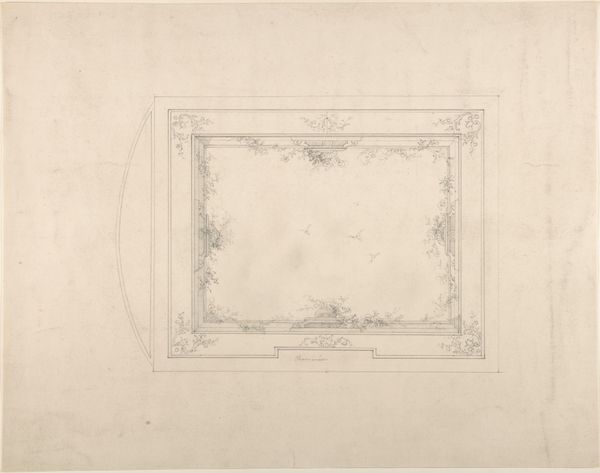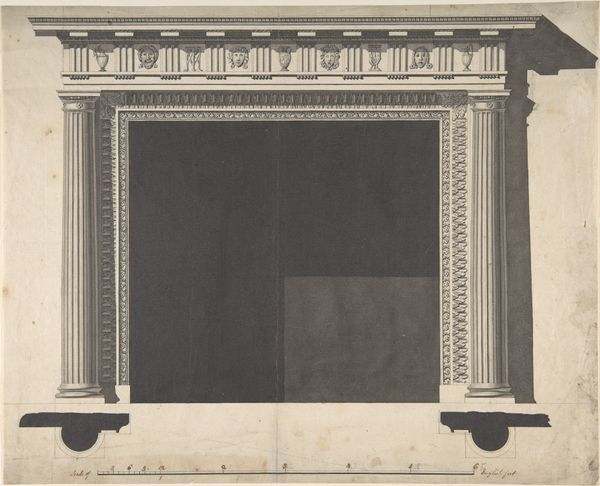
drawing, print, architecture
#
drawing
#
neoclacissism
# print
#
form
#
line
#
architecture
Copyright: Public Domain
Curator: Here we have Sir William Chambers' "Design for a Chimneypiece," dating from around 1740 to 1800, a print held at the Metropolitan Museum of Art. Editor: My immediate impression is one of cool detachment. It’s almost clinical, all about line and proportion, the grey wash filling only suggesting the mass of a stone. Curator: Precisely. Chambers, deeply rooted in Neoclassicism, aimed to resurrect the pure, idealized forms of antiquity. The design language echoes monumental Roman architecture, influencing perceptions of civic and domestic power. Editor: Absolutely, and observe the meticulous balance achieved through bilateral symmetry. Each molding, each register is measured against its counterpart. Semiotically, the ordered structure projects the authority of its commissioners. Curator: It's not just about aesthetics but also about societal values. The fireplace, historically the heart of the home, becomes here a carefully structured stage for symbolic display, reinforcing established power hierarchies through artistic language. Think about who would have seen and used such a grand architectural element. Editor: The stark contrast between the rigid, patterned frame and the empty, almost void-like fireplace interior is intriguing. The void signifies the power the architectural framework is about to house? Curator: Consider how fire traditionally symbolized warmth, security, but also potential chaos. Perhaps here, its symbolic force is being contained, civilized, mirroring Enlightenment ideals of reason reigning over passion. The iconographic meaning is clear to me. Editor: Interesting. What strikes me even more is the absence of any representational or figurative ornamentation—no mythological scenes, no putti. Its strength resides in the interplay of the lines. Curator: But the visual absence can be significant. This restrained ornamentation is a symbol of the period. It shows control of cultural values over baroque excess. This would become a template for future design for the upper classes and aristocracy. Editor: So, while I am absorbed by its forms and geometric precision, it sounds like you see how deeply it taps into cultural memory. It shows Neoclassicism acting as a transmitter for philosophical concepts. Curator: Precisely! It provides a foundation for interpreting cultural attitudes and their long endurance over time. Editor: A fine, thought-provoking piece; it makes the functional become so powerfully representational.
Comments
No comments
Be the first to comment and join the conversation on the ultimate creative platform.

